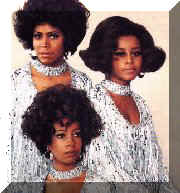![]()
![]() A
A
![]() SONG
SONG
![]()
![]()

FOR
YOU
![]()
![]()
![]()
![]()
![]()
|
|
||
|
|

|
FOR YOU
|
|
|
||
|
One of Motown's most prolific and gifted artist was Marvin Gaye, a troubled soul whose personal demons and demanding life propelled him to seek shelter in the music he created for the world. Not content to follow Motown's rule of being a cog in a well-oiled music machine, Marvin carved out a niche for himself . He was originally a member of a group called the Rainbows, whose original members consisted of John Berry, Ronald Miles, Henry Wonble, James "Sally" Nolan, and Frank Hardy. When Marvin joined the group Don Covey, Chester Simmons, and Billy Stewart had replaced some of the members of the group. In 1957 Marvin left the Rainbows to start the "Marquees" with Nolan, Simmons, and Reese Palmer. But he is best known as a member of the Moonglows. Despite a carefully crafted career path that had him singing pop tunes and dancable ditties, Marvin gave voice to a new era of singer/songwriting that would influence artists as varied as Stevie Wonder and Bono (of U2). He was originally known as the man with the silky voice whose nearest rival was Sam Cooke who, ironically, was Marvin's inspiration. From 'Stubborn Kind of Fellow' to 'Can I Get A Witness,' Marvin was taking Motown to new heights with each song he sang. For the longest time, Marvin held the Motown record of possessing the biggest hit for the label when he reworked 'I Heard It Through the Grapevine,' a tune originally recorded by fellow label mates, Gladys Knight & The Pips, into a paranoid piece of art. He also had the distinction of having chart successes with a variety of female singers on the Motown label: Kim Weston, Diana Ross and most famously, with Tammi Terrell. Eventually, Marvin came into his own. His songs were well-crafted, sharp and precise...everything the Motown machine was known for; but Marvin had personal demons that kept surfacing despite his public successes. But the death of Tammi Terrell, who had recorded several albums with him in the late sixties, threw him into a tailspin. He withdrew from the spotlight and retreated to Europe where he would emerge in 1971 with an album that would forever change his life, Motown and the musical landscape. "What's Going On" is largely considered by music critics as one of the most important work to emerge in pop history. Dealing with the harshness of life and the ravages of war, drugs and waste, Marvin weaved a tale of destruction and despair while renewing his fate in God. Berry Gordy didn't like the concept of the album but he released it at Marvin's insistence. They were rewarded with a #1 album. Marvin followed up the album with the equally enticing but conceptually different 'Let's Get It On' which focused on the sexual libido and the pleasures that comes with it. Using suggestive words that flowed over sensual rhythms, Marvin reclaimed his position at the top of the soul charts.
|
|||
|
SELECTED DIRECTORY GREATEST HITS - W/TAMMI TERRELL
|
|||
|
COLLECTION - THE MARVIN GAYE (BOX SET) Back to the Top 1. 20 TOP 20'S
3. RARE, LIVE AND UNRELEASED Back to the Top
4. THE BALLADEER Back to the Top
|
|||
|
COMPACT COMMAND PERFORMANCES Back to the Top
VOL II - 20 GREATEST HITS Back to the Top
|
|||
|
LET'S GET IT ON Back to the Top
|
|||
|
WHAT'S GOING ON Back to the Top
|
|||
|
MARVIN GAYE & DIANA ROSS Back to the Top
|
|||
|
MARVIN GAYE & TAMMI TERRELL Back to the Top
*The Onion Song although credited to Tammi Terrell was actually Valerie Simpson. Apparently, Motown convinced Marvin that releasing the songs with Valerie's vocals could only benefit Tammi (who was no longer able to record), as it would provide extra cash for Terrell's family. Even though Marvin did agree to go ahead with the plan, he did feel "guilty." The other hit record which features Simpson's voice but credited to Terrell is "What You Gave Me."
|
|||
| MARVIN GAYE & KIM
WESTON Back to the Top
|
|||
 |
 |
 |

|
| Next Page | Diana Ross/Supremes | Diana Ross | The Supremes |
|
E-MAIL ME:
|
|||